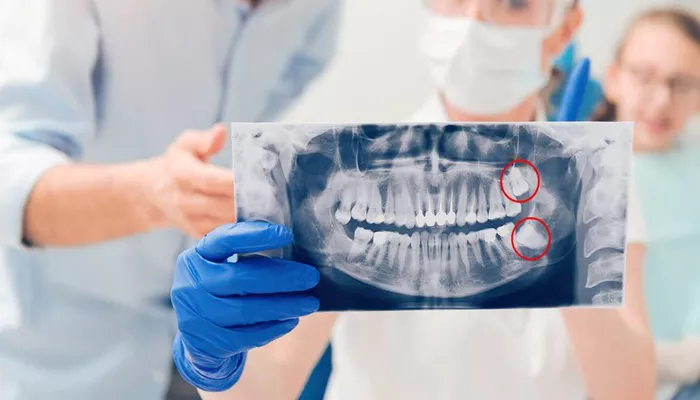Wisdom tooth extraction is a common dental procedure. While it is often necessary, it can lead to bruising and swelling in the days following the surgery. Bruising occurs when blood vessels break and leak into the surrounding tissue. This article will provide detailed information on how to reduce bruises after wisdom tooth extraction, including prevention tips, home remedies, and post-operative care.
Understanding Bruising After Wisdom Tooth Extraction
When wisdom teeth are removed, the body goes through a healing process. Bruising may occur due to the trauma of the extraction. The extent of bruising can vary from person to person. Factors that influence bruising include:
The complexity of the extraction: More complicated extractions may lead to more bruising.
Individual healing response: Some people bruise more easily than others.
Age: Older individuals may experience more bruising due to thinner skin and weaker blood vessels.
Understanding these factors can help you manage expectations and take steps to reduce bruising.
Pre-Operative Tips to Minimize Bruising
1. Choose an Experienced Dentist
Selecting a skilled oral surgeon or dentist is crucial. An experienced professional can perform the extraction with minimal trauma to the surrounding tissue. This can reduce the risk of bruising.
2. Discuss Medications
Before your procedure, inform your dentist about any medications you are taking. Blood thinners, such as aspirin or warfarin, can increase the risk of bruising. Your dentist may recommend stopping these medications a few days before surgery. Always follow your dentist’s advice regarding medication adjustments.
3. Avoid Alcohol and Smoking
Both alcohol and smoking can interfere with healing. Avoid these substances for at least 48 hours before your extraction.
This can help reduce the risk of complications and bruising.
Post-Operative Care: Immediate Steps
1. Apply Ice Packs
Immediately after the extraction, apply ice packs to the affected area. This can help reduce swelling and bruising. Follow these guidelines:
Use ice packs for the first 24 to 48 hours: Apply ice for 15-20 minutes every hour while awake.
Wrap ice packs in a cloth: This prevents frostbite and protects your skin.
see also: How to Relieve Sinus Pressure from Wisdom Teeth
2. Keep Your Head Elevated
Keeping your head elevated can help minimize swelling. Use extra pillows while sleeping or resting. This position encourages fluid drainage away from the extraction site.
3. Follow Your Dentist’s Instructions
Your dentist will provide specific post-operative care instructions.
Follow these closely to promote healing and reduce bruising. This may include:
- Taking prescribed medications
- Maintaining proper oral hygiene
- Avoiding certain foods
Home Remedies to Reduce Bruising
1. Arnica Gel
Arnica is a natural remedy that may help reduce bruising and swelling. Apply arnica gel to the bruised area as directed.
Avoid using it on open wounds or directly on the extraction site.
2. Vitamin K Cream
Vitamin K is known for its role in blood clotting and healing. Applying vitamin K cream to the bruised area may help speed up recovery. Use it as directed by the product instructions.
3. Bromelain Supplements
Bromelain is an enzyme found in pineapples. It may help reduce inflammation and bruising. Consult your dentist before taking bromelain supplements to ensure they are safe for you.
4. Hydration
Staying hydrated is essential for healing. Drink plenty of water and avoid caffeinated or alcoholic beverages. Proper hydration can help your body recover more quickly and may reduce bruising.
Dietary Considerations
1. Eat Soft Foods
After wisdom tooth extraction, stick to a diet of soft foods. Foods like yogurt, applesauce, and mashed potatoes are easy to eat and less likely to irritate the extraction site. Avoid hard, crunchy, or spicy foods that may cause discomfort.
2. Include Anti-Inflammatory Foods
Certain foods can help reduce inflammation and promote healing. Consider adding the following to your diet:
Leafy greens: Spinach and kale are rich in vitamins and minerals.
Berries: Blueberries and strawberries contain antioxidants that may aid recovery.
Fatty fish: Salmon and mackerel are high in omega-3 fatty acids, which have anti-inflammatory properties.
3. Avoid Salty and Sugary Foods
Salty and sugary foods can irritate the extraction site and may lead to increased swelling. Stick to a balanced diet to support your healing process.
Monitoring Your Recovery
1. Watch for Signs of Infection
While bruising is common, it is essential to monitor your recovery for signs of infection. Contact your dentist if you notice:
Increased redness or swelling
Pus or drainage from the extraction site
Fever or chills
Severe pain that does not improve with medication
2. Follow Up with Your Dentist
Attend any scheduled follow-up appointments with your dentist. They will assess your healing progress and address any concerns you may have. This is also an opportunity to discuss any lingering bruising or swelling.
Conclusion
Bruising after wisdom tooth extraction is a common occurrence. However, there are several steps you can take to reduce bruising and promote healing. By following pre-operative tips, applying ice packs, and using home remedies, you can minimize the impact of bruising. Additionally, maintaining a healthy diet and monitoring your recovery will support your overall healing process.

